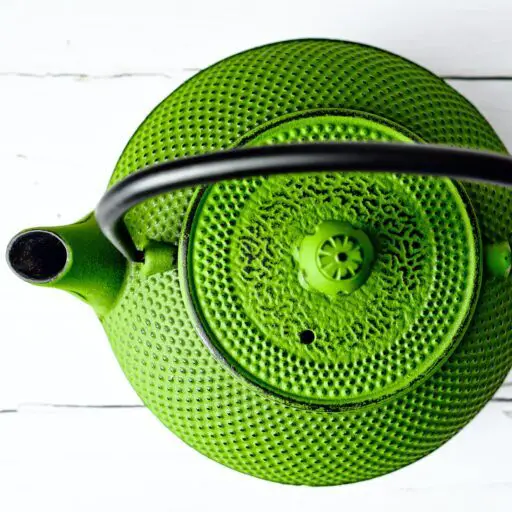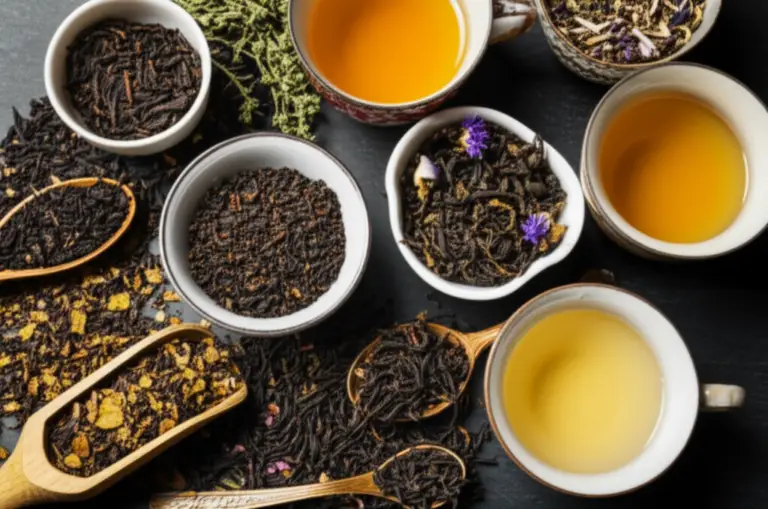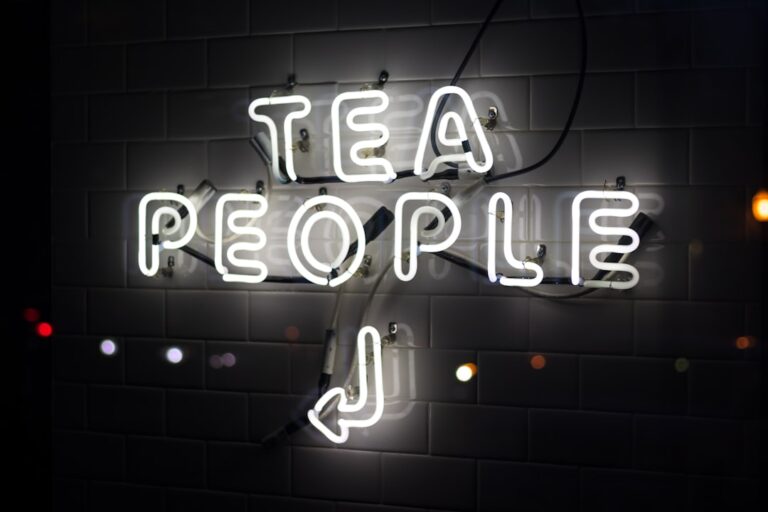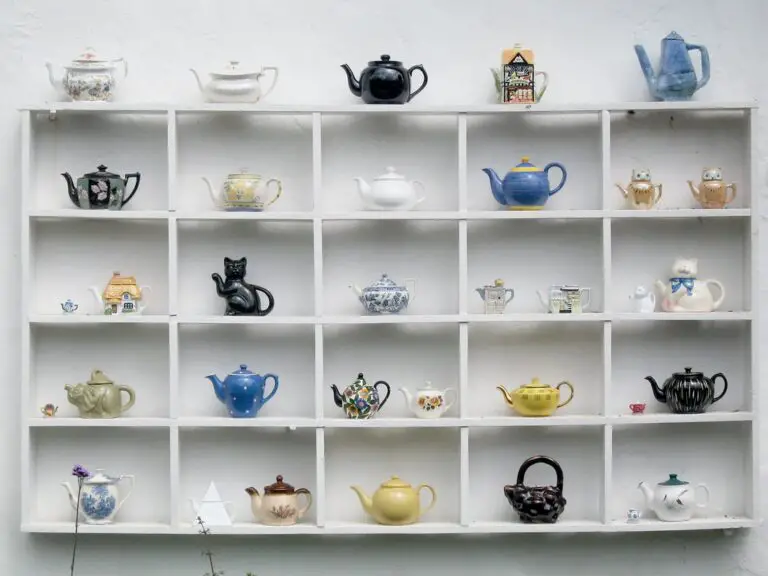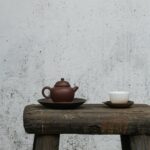Support our educational content for free when you purchase through links on our site. Learn more
American Tea Culture Uncovered: 15 Fascinating Facts & Traditions (2025) 🍵
Did you know that 85% of tea consumed in the U.S. is iced? That’s right—while the British perfected the art of hot afternoon tea, Americans rewrote the rules with sweet, refreshing iced brews that have become a cultural staple. But American tea culture is far richer and more diverse than just a cold glass of sweet tea. From the rebellious Boston Tea Party to Indigenous herbal brews and the booming specialty tea renaissance, the story of tea in America is a flavorful journey through history, innovation, and community.
In this comprehensive guide, we’ll spill the secrets behind America’s unique tea traditions, explore regional favorites, and introduce you to iconic brands and brewing tips that will elevate your tea game. Curious about the origins of the tea bag? Or how African American and Indigenous tea practices shaped the culture? We’ve got you covered. So grab your favorite mug (iced or hot!) and let’s dive into the fascinating world of American tea culture.
Key Takeaways
- American tea culture is defined by iced tea dominance and sweet tea’s Southern charm, making it uniquely different from British traditions.
- The Boston Tea Party was a pivotal moment that temporarily made tea unpatriotic, influencing early American beverage choices.
- Tea bags and instant tea were popularized in the U.S., reflecting a culture that values convenience.
- A modern renaissance of specialty teas and loose-leaf appreciation is reshaping American tea habits.
- African American and Indigenous tea traditions add rich cultural layers often overlooked in mainstream tea narratives.
- Regional tea preferences vary widely—from West Coast herbal wellness blends to Southern sweet tea empires.
- Brewing the perfect American cup means understanding tea types, water temperature, and storage tips.
Ready to explore iconic American teas and accessories?
Shop top brands and brewing essentials here:
- Bigelow Tea: Amazon | Walmart
- Celestial Seasonings: Amazon | Walmart
- Variable Temperature Kettles: Amazon | Walmart
Dive deeper and sip smarter with Tea Brands™!
Table of Contents
- ⚡️ Quick Tips and Facts: Your American Tea Cheat Sheet
- 📜 The Brew-tiful Beginning: A Sip into American Tea History
- 🇺🇸 America’s Unique Tea Traditions: Beyond the British Brew
- 🍵 The Great American Tea Renaissance: From Bags to Brews
- 🗺️ Regional Tea Flavors and Fads Across the USA
- 🧘♀️ Tea and Wellness: Health Benefits in Every American Mug
- 📈 The Business of Brews: American Tea Brands and Market Trends
- 🎬 Tea in American Culture: Beyond the Cup
- 👨🔬 Our Expert Brewing Tips & Tea Tasting Notes for American Palates
- ✨ Conclusion: The Ever-Evolving American Tea Story
- 🔗 Recommended Links: Dive Deeper into American Tea
- 🔥 FAQ: Your Burning Tea Questions Answered
- 📚 Reference Links: Our Sources for Your Trust
Body
Alright, tea lovers, let’s get this par-tea started! You’ve asked, and we, the expert tasters at Tea Brands™, are here to spill the tea on American tea culture. It’s a story steeped in rebellion, innovation, and a whole lot of regional charm. Forget what you think you know; we’re diving deep into the melting pot of American brews. Ready to find out What Tea to Drink in USA? Top 10 Picks You Can’t Miss (2025) 🍵? Let’s go!
⚡️ Quick Tips and Facts: Your American Tea Cheat Sheet
In a hurry? Here’s the fast track to understanding the American tea scene.
- Iced is King 👑: A whopping 85% of tea consumed in the U.S. is served cold.
- Sweet Tea is a Southern Religion: In the South, “tea” automatically means sweet iced tea. Don’t even think about asking for it unsweetened unless you want a funny look!
- The Tea Bag’s Murky Origins: While not definitively invented here, the tea bag was popularized and patented in the U.S. in the early 1900s.
- A Revolutionary Brew: The Boston Tea Party wasn’t just about taxes; it was a major political statement that briefly made tea drinking unpatriotic.
- Native Roots: Long before Camellia sinensis (the “true” tea plant) arrived, Indigenous peoples were brewing their own caffeinated and herbal teas, most notably Yaupon.
- Health is Wealth: The modern American tea renaissance is heavily driven by a focus on wellness and the Health Benefits of Tea.
- From China, With Love: After the Revolutionary War, American ships began direct trade with China, bringing a vast new world of tea to the young nation.
📜 The Brew-tiful Beginning: A Sip into American Tea History
You can’t talk about American tea without talking about America itself. The story of our nation and the story of this beloved beverage are more intertwined than a tightly rolled oolong!
Colonial Cups to Revolutionary Sips: Tea’s Early Days in America
When the Dutch first brought tea to the American colonies in the 17th century, it was an instant hit. Tea parties became the go-to social event across all classes. It was a symbol of sophistication, a little piece of the Old World in the New. But, as we all know, things got a little… heated.
The Boston Tea Party: More Than Just a Spill! 💥
Let’s be real, the Boston Tea Party was the most dramatic tea prep session in history. In 1773, when Britain imposed the Tea Act, colonists saw it as the final straw in a long line of “taxation without representation.” Dumping 90,000 pounds of East India Company tea into Boston Harbor wasn’t just a protest; it was a radical act of defiance.
Suddenly, drinking tea became a political statement, and not a patriotic one. A 1768 article in the Boston Gazette urged colonists to “abjure the poisonous baneful plant… on account of the political diseases and death that are connected with every particle of it.” Ouch. This pushed many to embrace coffee and native Herbal Tea alternatives. But don’t worry, tea’s American story was far from over.
🇺🇸 America’s Unique Tea Traditions: Beyond the British Brew
While we may have inherited a taste for tea from our British cousins, we Americans did what we do best: we made it our own. And that meant making it cold, sweet, and convenient.
The Reign of Iced Tea: A Refreshing American Staple 🧊
Here at Tea Brands™, we love a good hot cuppa, but we can’t deny the facts: America runs on iced tea. It accounts for the vast majority of tea consumption in the country. Its popularity exploded after the 1904 World’s Fair in St. Louis, where hot tea vendors, struggling in the summer heat, started pouring their brew over ice. The rest, as they say, is history. An early recipe from an 1879 cookbook, Housekeeping in Old Virginia, suggests making a strong green tea and pouring it into ice-filled goblets with sugar and a squeeze of lemon for a “delicious and healthful” drink. We couldn’t agree more!
Sweet Tea: The Southern Charm in a Glass 🍑
If iced tea is the king of American tea, then sweet tea is the undisputed queen of the South. It’s more than a drink; it’s a cultural institution. The tradition began in the late 19th century, but it truly became a staple with the rise of commercial ice and affordable sugar. The key to true Southern sweet tea? Dissolving a generous amount of sugar into the hot brewed tea before chilling it. This creates a smooth, fully integrated sweetness that you just can’t get by sweetening it cold. While the first tea plants in the U.S. were grown in South Carolina in the late 1700s, the town of Summerville, SC, proudly calls itself the “Birthplace of Sweet Tea.”
The Humble Tea Bag: An American Innovation? 🤔
Ah, the tea bag. A source of convenience for many and contention for some purists. The story goes that in 1908, a New York tea merchant named Thomas Sullivan started sending tea samples to clients in small silk pouches. They, in turn, mistakenly dunked the whole bag in hot water, and a new brewing method was born. While patents for similar “tea-leaf holders” existed before Sullivan, he is widely credited with popularizing the concept that would eventually lead to the paper-fiber bags we know today.
Instant Tea: Convenience Over Craft?
In the post-WWII era of convenience, America gave the world another tea innovation: instant tea. Introduced by Nestlé in 1946 as Nestea, it offered the “flavor” of tea in a soluble powder. While it certainly can’t compare to a freshly brewed cup, it further cemented tea’s place in the fast-paced American lifestyle.
🍵 The Great American Tea Renaissance: From Bags to Brews
For a long time, American tea culture was dominated by black tea bags and sugary iced tea. But oh, how the times have changed! We are living in a golden age of American tea, a true renaissance of flavor and appreciation.
The Rise of Specialty Teas and Loose Leaf Lovers in the US
Starting in the 1980s and exploding in recent decades, Americans have developed a thirst for something more. The specialty tea market has grown into a multi-billion dollar industry. We’re moving beyond the bag and embracing the beautiful, complex world of loose-leaf tea. This shift is about appreciating the craft, the origin, and the nuanced flavors of the tea leaf itself. It’s a journey we at Tea Brands™ are thrilled to be a part of, which is why we have our in-depth Tea Brand Guides.
Exploring Diverse Tea Categories: Green, Black, Oolong, Herbal & More!
The American tea palate has expanded dramatically. We’re no longer just a black tea nation.
| Tea Type | What to Know | Popular American Style |
|---|---|---|
| Green Tea | Unoxidized leaves, known for grassy, vegetal notes. | Often enjoyed for its health benefits, popular in wellness blends. |
| Black Tea | Fully oxidized, bold, and robust flavors. | The backbone of classic iced tea and English-style breakfast blends. |
| Oolong Tea | Partially oxidized, offering a huge range of flavors from floral to toasty. | A favorite among tea connoisseurs, gaining mainstream popularity. |
| Herbal Tisanes | Not from the tea plant, but infusions of herbs, fruits, and spices. | Hugely popular, with brands like Celestial Seasonings leading the way. |
| Specialty Blends | Creative mixes of different teas, herbs, and flavorings. | Think Earl Grey, Masala Chai, or unique fruit-infused blends. Check out our Specialty Blends! |
Crafting the Perfect Cup: Brewing Techniques for Every American Palate
With better tea comes better brewing! Americans are learning that you can’t just blast every tea with boiling water.
- Green Teas: ✅ Use cooler water (around 175°F / 80°C) to avoid bitterness.
- Black Teas: ✅ Can handle the heat! Use water just off the boil (around 205°F / 96°C).
- Cold Brew: ❌ No heat needed! Just steep tea leaves in cold water in the fridge for 8-12 hours for a super smooth, less acidic iced tea. This is a game-changer!
🗺️ Regional Tea Flavors and Fads Across the USA
America is a big place, and how we drink tea changes from coast to coast.
West Coast Wellness: Herbal Infusions and Zen Sips
Out west, the tea scene is deeply connected to the wellness movement. Think calming chamomile, energizing yerba mate, and antioxidant-rich matcha lattes. It’s less about tradition and more about how the tea makes you feel.
East Coast Elegance: Afternoon Tea Traditions Reimagined
On the East Coast, you’ll find a modern take on classic traditions. Swanky hotels in cities like New York and Boston offer high-end afternoon tea services, but you’ll also find cozy, independent tea shops putting their own spin on the classics.
Midwest Comfort: Cozy Cuppas and Community Connections
In the heartland, tea is all about comfort and community. It’s the warm mug on a cold day, the pot shared among friends. There’s a no-fuss approach here, with a love for straightforward, comforting blends.
Southern Hospitality: The Sweet Tea Empire and Beyond
We’ve already sung its praises, but the South is sweet tea country. It’s the “table wine of the South,” a non-negotiable part of any meal. But beyond that, you’ll find a growing appreciation for other teas, often with a Southern twist, like peach-flavored black tea or muscadine-infused blends.
🧘♀️ Tea and Wellness: Health Benefits in Every American Mug
A huge driver of tea’s popularity in the U.S. is its connection to health. From the ’60s and ’70s, when it was marketed as a gentle alternative to coffee, to today’s science-backed studies, Americans have embraced tea as a wellness beverage. Brands like Yogi Tea built their entire identity around the healing, spiritual properties of tea, often referencing Eastern traditions. This focus on feeling good, both physically and mentally, has introduced millions to the world of herbal and green teas.
📈 The Business of Brews: American Tea Brands and Market Trends
The American tea shelf is a bustling place, from legacy brands to innovative newcomers. It’s a dynamic market that reflects our changing tastes.
Iconic American Tea Brands We Love (and Why!)
We’ve tasted our way through countless brands (it’s a tough job, but someone’s got to do it!). Here are a few standouts that define the American tea landscape. For more, check out our Tea Brand Spotlights.
- Bigelow Tea Company: A family-owned classic, famous for their “Constant Comment” blend. A staple in American pantries.
- Celestial Seasonings: The pioneers of herbal tea in America, known for their iconic Sleepytime Bear and whimsical packaging.
- Luzianne: If you’re making iced tea in the South, chances are you’re using Luzianne. They are masters of the blend specifically designed for cold brewing.
- Stash Tea Company: One of the early players in the specialty tea game, offering a wide variety of unique and flavorful blends.
- The Republic of Tea: Known for their distinctive cylindrical tins and “Sip by Sip” philosophy, they helped elevate the perception of tea in America.
👉 Shop American Tea Brands on:
- Bigelow Tea: Amazon | Walmart
- Celestial Seasonings: Amazon | Walmart
- Stash Tea: Amazon | Walmart
- The Republic of Tea: Amazon | The Republic of Tea Official Website
The Sustainable Sip: Ethical Sourcing and Fair Trade Tea in the US
Modern American tea drinkers are savvy. You care about where your tea comes from, and so do we! There’s a growing demand for transparency, ethical sourcing, and sustainable practices. Brands are increasingly highlighting their Fair Trade, Organic, and Rainforest Alliance certifications. This conscious consumerism is pushing the entire industry to be better, from leaf to cup.
🎬 Tea in American Culture: Beyond the Cup
Tea is more than just a drink; it’s woven into the fabric of our culture in ways both big and small. The audio version of the Wikipedia article, which is the first YouTube video embedded above, covers this topic well and could be a helpful listen. (#featured-video)
Tea Houses and Cafes: Community Hubs for Tea Lovers
While coffee shops still dominate, dedicated tea houses are carving out their niche. They are often seen as “social places” where people naturally communicate, a contrast to the often solitary ritual of coffee. These spaces are vital for building community and educating the public about the vast world of tea.
Tea Pairings: From Brunch to Dessert, American Style
Who says wine gets to have all the fun? We love pairing teas with food!
- Brunch: A bold English Breakfast tea cuts through the richness of bacon and eggs.
- Lunch: A light, grassy Sencha Green Tea is perfect with a salad or sandwich.
- Dessert: A spicy Masala Chai is a dream with apple pie, while a floral Jasmine Green Tea complements a fruit tart beautifully.
Tea in Pop Culture: Movies, Music, and More!
From the Mad Hatter’s tea party in Alice in Wonderland to the modern slang “spilling the tea” (which refers to sharing gossip and has roots in African American Vernacular English), tea is everywhere. It signifies everything from quiet contemplation to juicy drama.
African American Tea Traditions: A Rich Tapestry of Flavor and History 🤎
The story of tea in the African American community is one of resilience, community, and profound cultural significance. For centuries, tea has been a cornerstone of gatherings and rituals. In times when oppressive laws limited access to public spaces, homes, churches, and businesses became sanctuaries where sharing a cup of tea was an act of unity and resistance.
Emerging in the late 19th and early 20th centuries, Black-owned tea rooms became vital community hubs. Far more than just places to drink tea, they were centers for entrepreneurship, cultural exchange, and activism, hosting meetings for groups like the NAACP. Some historians trace a specific “African American Tea Ceremony” to New Orleans, where enslaved people would create their own elegant gatherings using borrowed or passed-down china, turning a day of rest into a celebration of community. This tradition highlights how tea became a symbol of creating beauty and connection in the face of hardship.
Indigenous American Tea Practices: Herbal Wisdom and Native Brews 🌿
Long before European ships arrived, the original inhabitants of this land had a rich and deep-rooted tea culture of their own. This wasn’t Camellia sinensis, but a vast apothecary of native plants used for medicine, ceremony, and daily enjoyment.
The most significant of these is Yaupon (Ilex vomitoria), the only naturally caffeinated plant native to North America. Various tribes, including the Cherokee, Muscogee, and Timucua, revered Yaupon, calling it the “Beloved Tree” and using it to brew a ceremonial “Black Drink” for purification and before important events. European colonists quickly adopted Yaupon, calling it “Carolina Tea” or “Indian tea.” Beyond Yaupon, countless other plants were used for their healing properties, such as cedar for fevers, mint for digestion, and raspberry leaf. These traditions represent a profound connection to the land and an understanding of the natural world that continues to be passed down through generations.
👉 Shop Native Teas on:
- Yaupon Tea: Amazon | Etsy
- Native American Tea Co.: Grandfather’s Spirit
👨🔬 Our Expert Brewing Tips & Tea Tasting Notes for American Palates
Okay, let’s get down to the nitty-gritty. You’ve got the history, you’ve got the culture, now how do you make the perfect cup?
Choosing Your Perfect American Brew: A Taster’s Guide
- If you love coffee: Try a robust, malty Assam black tea or a smoky Lapsang Souchong. For something truly unique, a roasted Hojicha green tea has a wonderful coffee-like character.
- If you prefer something light & refreshing: A classic iced black tea is your go-to. For hot tea, try a delicate Darjeeling (the “champagne of teas”) or a sweet, floral Silver Needle white tea.
- If you want caffeine-free: The world of Herbal Tea is your oyster! Peppermint is great for digestion, Chamomile is calming, and Rooibos (Red Bush) from South Africa is a fantastic, full-bodied alternative to black tea.
Storage Secrets for Freshness: Keeping Your Tea Top-Notch
Don’t let your beautiful leaves go stale! Tea’s biggest enemies are air, light, moisture, and strong odors.
✅ DO: Store your tea in an opaque, airtight container in a cool, dark place like a pantry or cupboard.
❌ DON’T: Store your tea in the fridge or freezer (condensation is bad!), next to your spice rack, or in a clear glass jar on the counter.
Essential Tea Accessories for the American Tea Lover
You don’t need much to get started, but a few key items can elevate your tea game.
- A Variable Temperature Kettle: The single best investment for any tea lover. It allows you to heat water to the precise temperature needed for different tea types.
- A Good Infuser: For loose-leaf tea, you need an infuser that gives the leaves plenty of room to expand. We love basket-style infusers that fit right into your mug.
- A Dedicated Iced Tea Pitcher: If you’re serious about your iced tea, get a pitcher specifically for brewing. Many come with built-in infusers for ultimate convenience.
👉 Shop Tea Accessories on:
- Variable Temperature Kettles: Amazon | Walmart
- Tea Infusers: Amazon | Etsy
- Iced Tea Pitchers: Amazon | Walmart
✨ Conclusion: The Ever-Evolving American Tea Story
So, what have we learned on this flavorful journey through American tea culture? From its colonial roots steeped in rebellion to the iced tea revolution that defines summer in the South, tea in America is a story of adaptation, innovation, and community. Whether it’s the sweet Southern staple, the wellness-driven herbal infusions of the West Coast, or the rich traditions of Indigenous and African American tea practices, American tea culture is as diverse and dynamic as the country itself.
We also uncovered how convenience shaped American tea habits—hello, tea bags and instant tea!—but how a renaissance of specialty teas and loose-leaf appreciation is brewing a new era of tea sophistication. And yes, tea is more than just a drink here; it’s a social glue, a health ritual, and a cultural symbol.
If you’re wondering how to start your own American tea adventure, remember: there’s no one right way to enjoy tea. Whether you’re a fan of a strong black iced tea, a delicate green brew, or a caffeine-free herbal infusion, the perfect cup is waiting for you. And with the right brewing tools and a little patience, you’ll be savoring your own slice of American tea culture in no time.
So, next time you sip your tea, think about the centuries of stories, traditions, and innovations in your cup. And if you’re curious about exploring more, dive into our recommended links below for the best brands, accessories, and books to deepen your tea journey.
🔗 Recommended Links: Dive Deeper into American Tea
👉 Shop Iconic American Tea Brands:
- Bigelow Tea: Amazon | Walmart | Bigelow Official Website
- Celestial Seasonings: Amazon | Walmart | Celestial Seasonings Official Website
- Stash Tea: Amazon | Walmart | Stash Tea Official Website
- The Republic of Tea: Amazon | The Republic of Tea Official Website
👉 Shop Tea Accessories:
- Variable Temperature Kettles: Amazon | Walmart
- Tea Infusers: Amazon | Etsy
- Iced Tea Pitchers: Amazon | Walmart
Books to Sip and Savor:
- The Story of Tea: A Cultural History and Drinking Guide by Mary Lou Heiss & Robert J. Heiss — Amazon
- Tea: History, Terroirs, Varieties by Kevin Gascoyne et al. — Amazon
- Sweet Tea: A Love Story by Amy Stewart — Amazon
🔥 FAQ: Your Burning Tea Questions Answered
What is the history of tea in America and how has it evolved over time?
Tea arrived in America in the 17th century via Dutch traders and quickly became a popular beverage among colonists. However, political tensions, especially the Boston Tea Party in 1773, temporarily turned tea into a symbol of British oppression, leading many Americans to favor coffee and herbal infusions. Over the 19th and 20th centuries, tea consumption shifted, with iced tea becoming the dominant form, especially in the South. The late 20th century saw a resurgence of specialty teas and loose-leaf appreciation, driven by wellness trends and global tea culture influences. Today, American tea culture is a rich tapestry blending tradition, innovation, and diverse regional flavors.
How does American tea culture differ from British tea culture and other international traditions?
Unlike the British, who emphasize hot tea rituals such as afternoon tea with scones and finger sandwiches, Americans primarily consume iced tea—about 85% of tea in the U.S. is served cold. American tea culture is less formal and more convenience-driven, with widespread use of tea bags and instant tea. Additionally, the U.S. has unique regional traditions like Southern sweet tea and Indigenous herbal brews like Yaupon. Internationally, tea often serves as a communal and ceremonial beverage (e.g., Chinese Gongfu tea or Japanese tea ceremonies), whereas in America, tea is both a social glue and a quick refreshment, reflecting the country’s fast-paced lifestyle.
What are some popular tea brands and blends that are uniquely American or have a significant following in the US?
Several brands have become household names in America:
- Bigelow Tea Company: Known for their signature “Constant Comment” blend, a uniquely American spiced black tea.
- Celestial Seasonings: Pioneers in herbal teas with iconic blends like Sleepytime.
- Luzianne: Famous for their iced tea blends, especially in the South.
- Stash Tea Company: Offers a wide variety of specialty blends catering to American tastes.
- The Republic of Tea: Known for premium packaging and a focus on high-quality loose-leaf teas.
These brands reflect American preferences for convenience, flavor variety, and wellness.
Are there any regional tea traditions or festivals in the United States that showcase American tea culture and its diversity?
Absolutely! The South is famous for its sweet tea culture, with festivals like the South Carolina Sweet Tea Festival celebrating this iconic beverage. The Charleston Tea Garden in South Carolina offers tours and events highlighting American-grown tea. On the West Coast, wellness and herbal tea festivals showcase the growing interest in natural and organic blends. Additionally, tea houses in cities like New York and San Francisco host cultural events that celebrate the diversity of tea traditions, including African American and Indigenous tea practices.
How do Indigenous and African American tea traditions contribute to the broader American tea culture?
Indigenous Americans have brewed native herbal teas like Yaupon for centuries, using them in social and ceremonial contexts. This tradition represents the oldest known tea culture on the continent and continues to influence modern herbal blends. African American tea traditions, particularly through Black-owned tea rooms and community gatherings, have fostered social cohesion and cultural expression. These rich histories add depth and diversity to American tea culture, reminding us that tea is not just a drink but a vessel of heritage and community.
📚 Reference Links: Our Sources for Your Trust
- American Tea Culture – Wikipedia
- Thrillist: Tea Culture in America
- Bigelow Tea Company
- Celestial Seasonings
- Stash Tea Company
- The Republic of Tea
- Charleston Tea Garden
- Yogi Tea
- Learn about African American Tea Culture at the Parkway Central Branch of the Free Library of Philadelphia with Black Tea Rhapsody: An Homage to African American Tea Culture Exhibition
Thanks for joining us on this deep dive into American tea culture! Ready to brew your next cup with newfound appreciation? We thought so. ☕️✨
